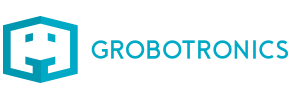A top of the line Pirate-brand RP2040-powered microcontroller with lots of flash memory, USB-C, STEMMA QT/Qwiic and debug connectors... and built in LiPo charging!
We adore the versatility and value of Raspberry Pi Pico but since its release we've been hankering for a souped up RP2040 board with all the extras baked in. With Pimoroni Pico boards, we've tried to cram in as much extra functionality as we possibly can whilst keeping to the Pico footprint to maintain compatibility with existing Pico addons.
Pimoroni Pico LiPo is powered and programmable via USB-C and comes with a choice of either 4 or 16MB of QSPI (XiP) flash. We've made it super easy to connect to things solderlessly too - there's a Qwiic / STEMMA QT connector so you can hook up a whole host of different sensors and breakouts, and a debug connector for if you want to do your programming using a SWD debugger. Because we love buttons at Pirate HQ, there's an on/off button and a BOOTSEL button, which can also be used as a user switch.
Pimoroni Pico LiPo also has onboard LiPo/LiIon battery management - the inbuilt charging circuitry means charging your battery is as easy as plugging your Pimoroni Pico Lipo in via USB. There's two indicator LEDs connected to the battery circuit to keep you informed of on/off state and charging status and it's compatible with any of our LiPo, LiIon and high capacity LiPo batteries.
Programmable with C++, MicroPython or CircuitPython, Pimoroni Pico LiPo is the perfect powerhouse for your portable projects.
About RP2040
Raspberry Pi's RP2040 microcontroller is a dual core ARM Cortex M0+ running at up to 133Mhz. It bundles in 264kB of SRAM, 30 multifunction GPIO pins (including a four channel 12-bit ADC), a heap of standard peripherals (I2C, SPI, UART, PWM, clocks, etc), and USB support.
One very exciting feature of RP2040 is the programmable IOs which allow you to execute custom programs that can manipulate GPIO pins and transfer data between peripherals - they can offload tasks that require high data transfer rates or precise timing that traditionally would have required a lot of heavy lifting from the CPU.
NOTES
- Safety note! You should only use Pimoroni Pico LiPo with LiPo or LiIon batteries, and you should make sure that any project involving LiPos is sufficiently protected from being dented, bent, punctured or crushed.
- Batteries, cables and headers are not included!
- The power button can also be used as a reset button, yay! Just double press it to cut and reinstate the power whilst holding down the BOOTSEL button on the Pimoroni Pico LiPo to get into bootloader mode, with no plugging and unplugging of cables required.













